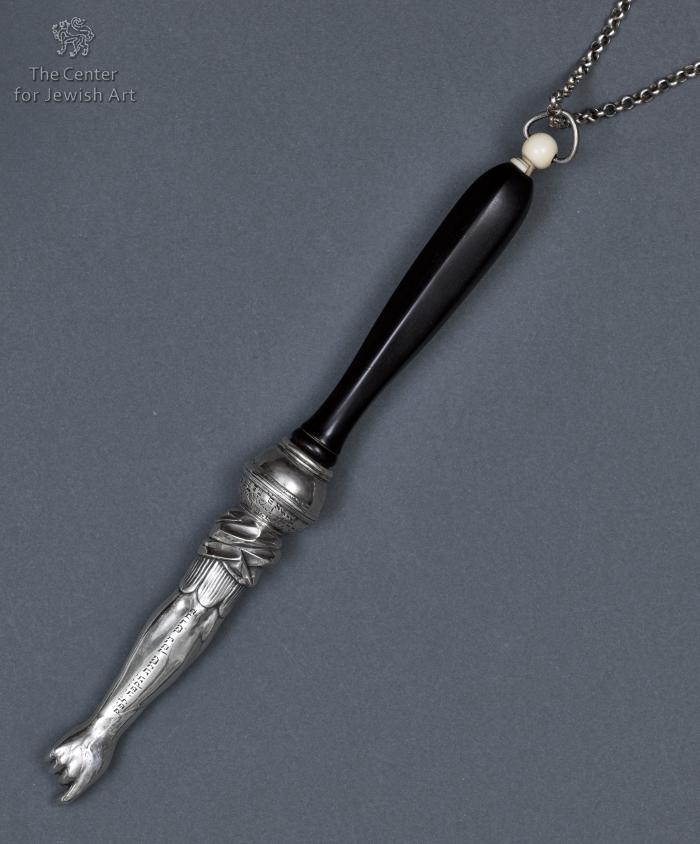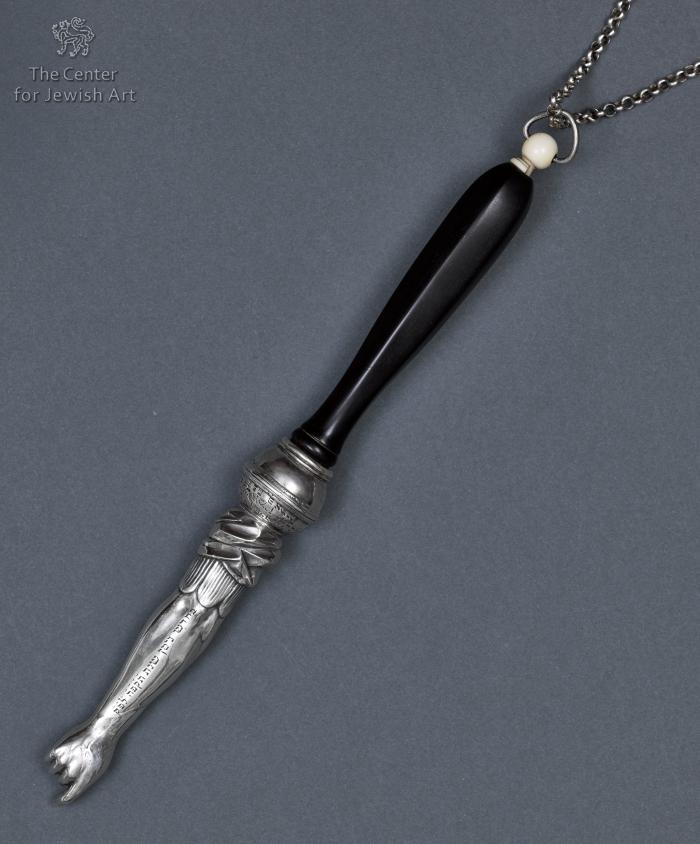Obj. ID: 37308 Torah pointer, Paris, 1825

sub-set tree:
The following description was prepared by William Gross:
The pointer used by the Torah reader to keep the place is known in European communities as the *yad, "hand," or the etẓba, "finger," and in Sephardi and Eastern communities as the moreh, "pointer," or kulmus, "quill," the former because of its function and the latter because of its shape. Halakhic sources also use the terms moreh or kulmus. The pointer was originally a narrow rod, tapered at the pointing end, usually with a hole at the other end through which a ring or chain could be passed to hang the pointer on the Torah scroll. An additional reason for using the pointer was to prevent the oily finger from touching the parchment and inked letter, something that would eventually cause severe deterioration.
The original form of the pointer was preserved in Eastern communities, the differences from one community to another being mainly in length and ornamentation. In certain communities, a hand with a pointing finger was added, and accordingly, the pointer came to be known as a yad, "hand," or eẓba, "finger." Pointers are made for the most part of silver or silver-plated brass, but in a few European communities, they used to be made of wood. In such cases, the pointers were carved in the local folk-art style.
This is a most exquisitely-crafted Torah pointer, using a combination of black ebony wood and silver, with a small chain holder at the top fashioned from ivory. The integrated use of such materials is very unusual, as is the typical French form which uses the entire forearm, rather than just the hand, as the pointing device. The detailed treatment, including the veins of the arm and the ruffled top of the sleeve, add to the elegance of the piece. The name in the inscription indicates that the donor was clearly of Sephardic origin.
Inscription: Donated by the young man, Benyamin, son of Rav Y(a’akov) [or Y(itzhak) Bechamin, to the Society of the T(almud) T(orah), may his rock protect it, here in Paris in the month of Nissan, the year (5)585 [1825], according to the minor reckoning






